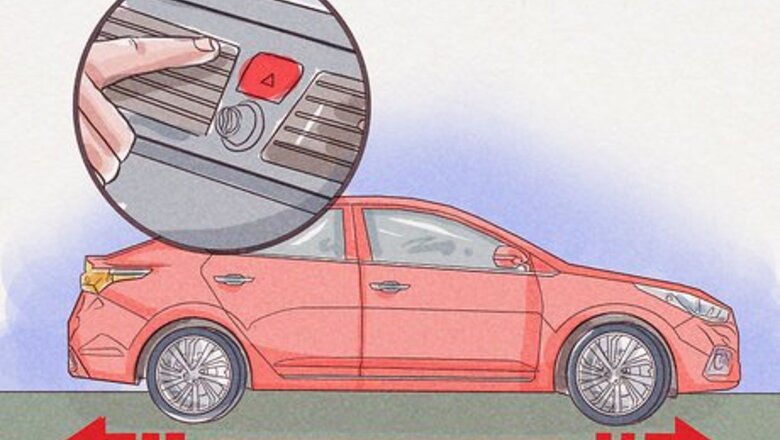
views
Move the car to a flat surface in a safe area.
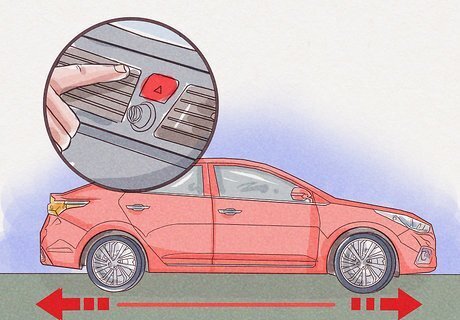
It’s dangerous to switch tires on an incline and/or busy area. If you aren't in a driveway or garage, turn on your hazard lights. If necessary, push or tow your vehicle out of hazards so that you don’t put your life in danger.
Secure your vehicle’s wheels.
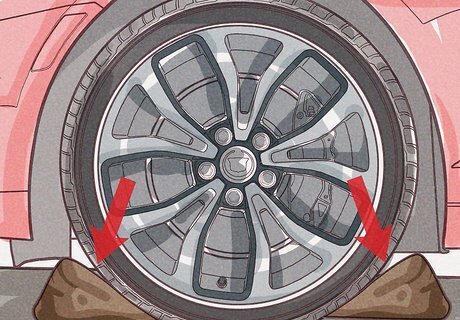
Set your parking brake and place a backstop under the diagonal wheel. Place pieces of wood or large rocks in front and in back of the tire that is diagonally across from the one being changed to keep the car from rolling. Make sure this wheel will not roll. If it's a rear wheel, set the parking brake. If it's a front wheel on a front wheel drive car, be sure the car is in park for automatic transmission. On a manual transmission, put the vehicle in first gear.
Remove the hubcap.
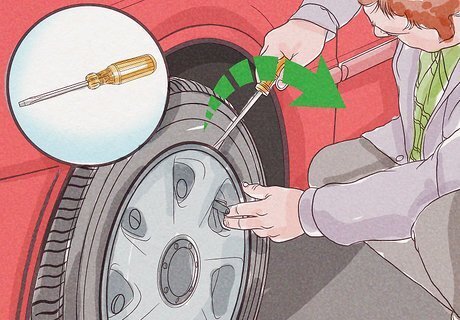
Use a flat screwdriver to remove the cap and expose the lug nuts. You can also use the flat end of a lug wrench to remove the hubcap. Once it is removed, place the hubcap in your trunk or set it inside of your vehicle so that you don’t accidentally scratch the hubcap up.
Loosen the lug nuts.
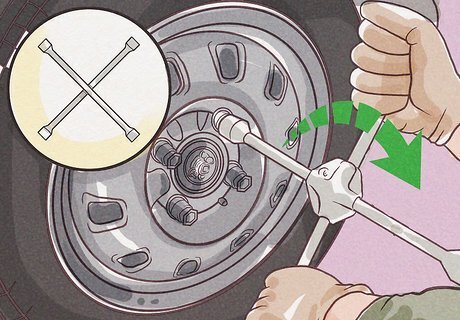
Make each nut loose enough to move by hand. Fit one end of the lug nut wrench onto the lug nut and turn it counterclockwise. Only loosen each nut about a quarter turn. Continue until you've loosened each lug nut. Don’t take any of the nuts off just yet!
Find your car's jacking point.
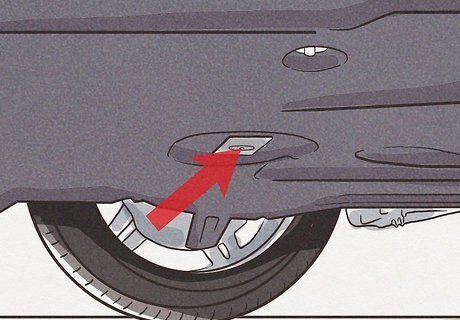
Older vehicles use the frame, while newer cars have tabs on the seams. Any point of the frame should work on an older vehicle. On newer cars, refer to the manual to find the jacking point. Place the jack in place and raise the car slowly. Make sure the car doesn't try to roll away as the wheel comes off the ground.
Raise the vehicle up to give yourself room to work.
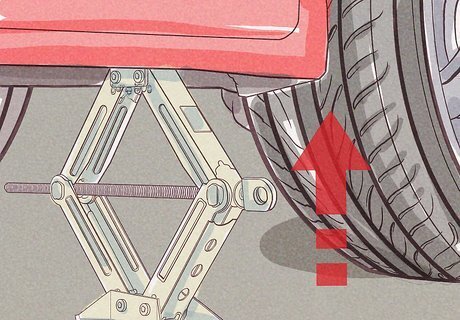
Jack the car up until it is high enough to remove the old wheel. The new wheel may be bigger in diameter than the old flat wheel. You need enough room for the new tire to fit, so continue jacking the car up.
Remove the lug nuts.
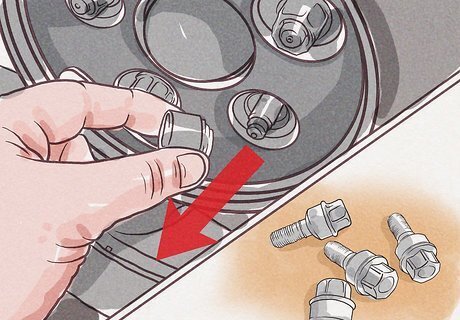
With the wheel in the air, remove the lug nuts by hand. You loosened the nuts already, so you should be able to rotate the nuts off with your fingers. Place the nuts on a towel so that they don’t roll away.
Lift the old wheel off.
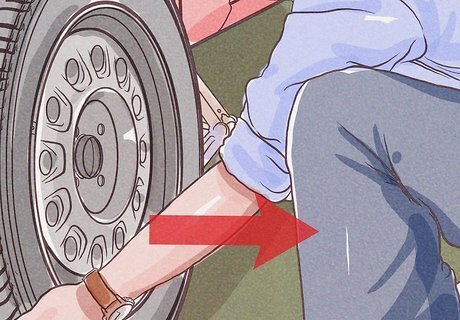
Remove the wheel from the car by sliding it off. Make sure you have a firm grip so your tire doesn't roll away. Take the spare tire out of the trunk and set it nearby. Put the old tire in the trunk. Don’t throw the old tire out. You can get it fixed at a mechanic for a very low cost.
Slide the new wheel onto the bolts.
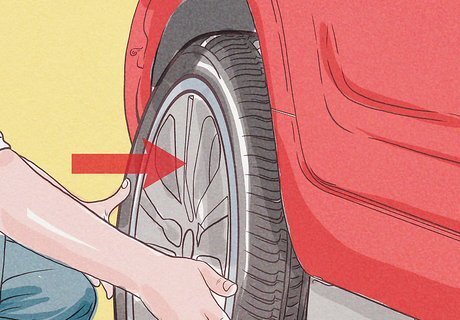
Match the holes of the new wheel with the stud bolts on the car. Set the wheel on the studs so that the bolts stick out a bit. The new wheel should align with the bolts the exact same way your old wheel was aligned.
Put the lug nuts back on.

Slide the nuts back on the bolts and tighten them by hand. Make sure the rounded end of the nut goes towards the wheel or your wheel will be loose. The nuts should go most of the way in by hand. Take your lug wrench and tighten them as much as you can with the wheel in the air. You're going to tighten them again later, but you don't want the wheel moving around on the studs.
Lower the car partially and tighten the nuts.
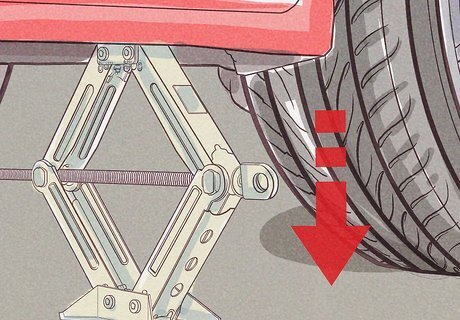
Once the wheel begins to touch the ground, tighten the nuts all the way. Use your lug wrench and turn each lug nut clockwise to tighten it. Each nut should be extremely tight. If you're a small to medium build person, I would say they should be as tight as you can get them. If you're a body builder, just don't break the studs. The lug nuts should be exceptionally tight. You shouldn’t be able to move the lug wrench at all when you try to turn it.
Lower the car and replace the hubcap.

Once it’s on the ground, remove the jack and put the hubcap back. Lower the jack back and slide out from underneath your vehicle. Double-check each nut one more time to make sure that they’re 100% tight. Replace the hubcap and ensure that’s it’s secured to the wheel. If you are not comfortable that the hubcap is secure, remove it and have someone help you at a later time.










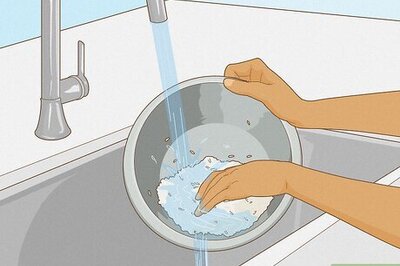









Comments
0 comment